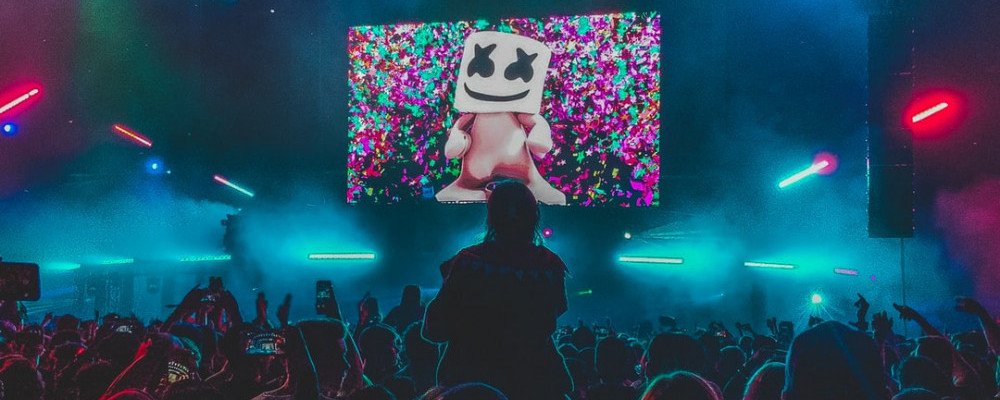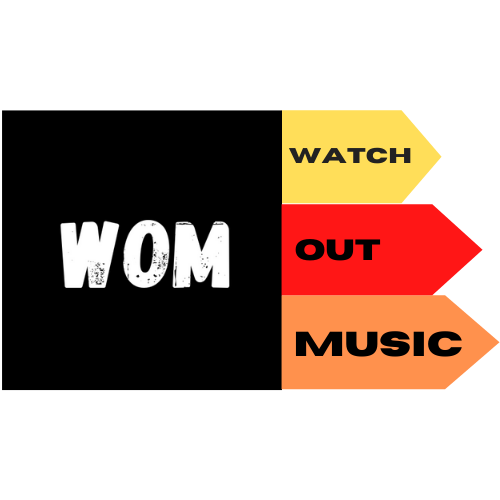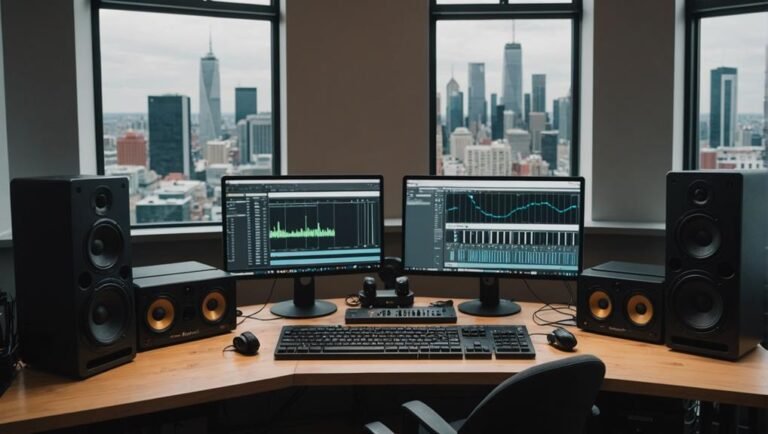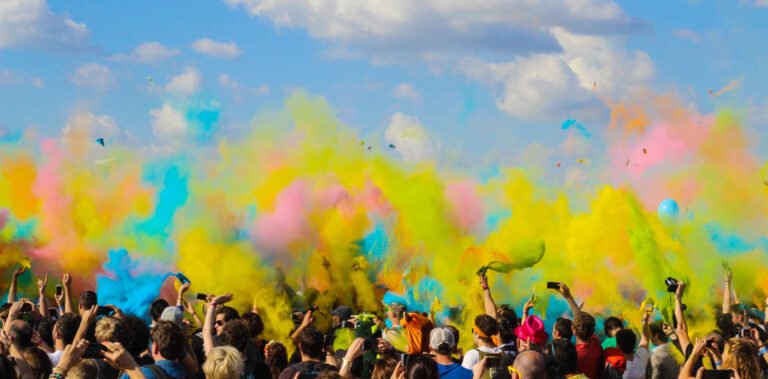
EDM is an acronym that stands for Electronic Dance Music.
It is a form of music that is typically characterized by heavy bass lines and beats, synthesizers, drum machines, and sequencers as the main instruments, occasionally vocals. The genre has its roots in disco and house music of the 1970s and ’80s and has seen a resurgence in popularity in recent years.
EDM is often enjoyed by fans for its energetic and euphoric qualities and has become a popular form of dance music in nightclubs and festivals around the world.
EDM is a term that refers to a lot of different subgenres, including house music, techno, trance music, dubstep, future bass, and trap just to name a few.
EDM has been around for quite some time but has only recently become very popular in the United States. It was once seen as an underground genre with no commercial value until it began to be featured on mainstream radio stations. The popularity of EDM is growing every year so keep your ears open!
Who Was The First To Use The Term EDM?
In the late 1970s and early 1980s, disco music was at the height of its popularity. While some bands and artists were still making disco music a new genre of music was emerging that would come to be known as “electronic dance music” or EDM.
A British-born DJ and producer coined the term “EDM.” Richard James Burgess, known professionally is credited with first using the term in print on the record sleeve of the 1980 “European Man” single by Landscape.
A Brief History of Electronic Music
Dance music in the early 1980s
The term house first emerged in the mid-1980s, when DJs from Chicago’s “house music” club scene began referring to the electronic dance tracks—which were created by layering synthesizers and drum machines over a steady groove—as house records.
The Roland TR-808 drum machine, Roland TB-303 bass synthesizer, and Korg Poly-61 synthesizer were used in the production of house sound at the early stages.
“House “was also known as “The Sound of Chicago,” thanks in large part to the number of local artists who produced it.
Prominent among these producers were Marshall Jefferson, Steve Hurley, whose 1986 hit single on Trax Records introduced house music to Europe, Farley Keith (Jackmaster), and Frankie Knuckles resident DJ at the members-only African American gay club “The Warehouse “.
The name of this club was shortened to give the name of the new kind of music “the house sound” or “house music”.
The first house record was released in Chicago by DJ Larry Levan. The track was called “On & On” and it was spelled ‘On & On’ on the record label. It is a 12-bar blues that has an intro, a verse, an instrumental break, and then back to the main structure of the song for one more chorus and a breakdown before ending with the same riff as at the beginning.
This club hosted some of Chicago’s most celebrated underground raves during its heyday from 1985 through 1989.
While in Detroit local DJs were impressed by Kraftwerk a german band that created electronic music. The band had a show that was broadcasted on WJLB in Detroit and the DJs liked their music so much, that they decided to do something about it.
They put together an ad for local musicians to perform at the radio station which resulted in Kraftwerk’s performance there. The seed of another new trend in music named Techno was planted.
By the end of 1977, a small group of artists was already making music that was very much influenced by Kraftwerk and other german electronic bands.
The group included Larry Mizell, James Bissett, Derrick May, Carl Craig, and Kevin Saunderson. They were all part of a local club called “The Music Institute” which was located on the east side of Detroit.
By 1980 this group had expanded to include Todd Edwards (aka DJ Todd Edwards), Kenny Carpenter (better known as K-Carp), Robert “Roby” Spence, and Eric Kupper who later became known as E-Kut Records. These musicians would often play out at underground parties around Detroit until they eventually started their own record label called Trax Records in 1983.
This is where the Techno sound really took off with more artists like Juan Atkins, The Prodigy, and many others.
Dance music in the early 1990s
Trance is a form of electronic dance music that originated in the early 1990s. Trance is characterized by a 4/4 rhythm and breakdowns (repeats), which are prominent in many trance tracks.
It emerged from the rave scene in the United Kingdom in the late 1980s and developed further during the early 1990s in Germany before spreading throughout the rest of Europe.
The genre focuses on more melodic, harmonic sounds created by synthesizers, sound effects, and samples. Trance has influenced many other genres such as techno and house to become much more melodic than their original styles.
Some subgenres of Trance include Goa trance, Psychedelic trance, Progressive Trance, Uplifting Trance, and Digital hardcore Trance.
Trance has been described as a “melodic, hypnotic state”, which is achieved through repeated listening to strong vocal hooks or repetitive riffs. Trance can be seen as a subgenre, but this distinction is often blurred.
Trance music has varied from the house and disco-influenced styles to more experimental sounds. It may also incorporate influences from jazz, soul, hip hop, or even pop music in different countries around the world.
The origin of trance was in the late 1980s at illegal parties on London’s rave scene (where it was called Goa trance), where people with specialist equipment played back tapes of Indian Bollywood soundtracks in order to create an effect similar to that produced by DJs’ mixing records on turntables – but without any DJ being present onstage.
Dance music in the early 2000s
By 2010, the phrase “EDM” had become more and more popular among the American music industry and press.
The idea of EDM is that it should be a form of electronic dance music that can be enjoyed by mainstream audiences. This means that most of its fans are young people who don’t necessarily identify as ravers; however, some still do.
The aim of this campaign was to distance EDM from its negative connotations associated with drugs, violence, and illegal drug sales.
In the U.S., “EDM” most commonly refers to house and techno, although it can also mean other forms such as trance and drum & bass.
However, in Europe, the term is often used to describe the only house and/or techno styles of dance music that attract mainstream audiences from non-raving teenagers or young adults; this usage has become common among European media outlets since 2009.
In contrast to American EDM, which has been promoted by artists like Tiësto or David Guetta, European EDM often features more experimental or even industrial sounds among its tracks. It also tends to be less pop-oriented than the American version while still featuring some pop influences.
According to a report by The Guardian published in 2015: “In 2009, EDM was not only still synonymous with ‘rave’ but also frequently used as shorthand for a particular brand of commercialized electronic dance-pop.”
The era of electronic music was an era in the history of pop and dance music, lasting from about 1988 to 2004.
Today, Electronic Dance Music does not commonly refer only to house and trance but also encompasses drum & bass, techno, glitch hop, breakbeat, and many other genres outside those
Terms to Know About EDM Music
Sound
• Bass .-Low frequency sound that gives a song its foundation
• BPM-Beat Per Minute. this is how fast a song is played
• Chord- A group of three or more notes strung together.
• Comping-Improvisation over chords.
• Drop-When a bassist plays a note and then drops back down to a lower pitch.
• Fretboard-The board where strings are attached to make a musical sound.
Lyrics
• Intro- Introduction of a song.
• Hook-A catchy melody
• Verse 1-where the singer talks.
• Pre-Chorus-Change of tone before the chorus
• Chorus-Here the singer gives his opinion on the subject of lyrics
• Bridge-A transition between pre-chorus/chorus/outro
• Outro-Last section of a song
What are the biggest EDM music festivals in the US?
1 – EDC- Las Vegas – https://lasvegas.electricdaisycarnival.com/
2 – Ultra Music Festival -Miami– https://ultramusicfestival.com/
3 . Electric Zoo Festival – Randall’s Island Park, New York City- https://electriczoo.com/
These are three of the biggest music festivals in the United States. They all take place at different times of the year.
EDM festivals started in Europe when parties became too large and clubs couldn’t hold them anymore.
What Is The Social Impact Of EDM Music Pro & Con
Pro
• Music Industry
According to the International Music Summit’s 2016 Ibiza Report, electronic dance music is a global industry worth an estimated $7.1 billion dollars, representing a huge increase in revenue, with 60% more than in 2013.
The report also identified several emerging markets for electronic dance music, including East Asia (especially China), India, and South Africa credited primarily to investment by domestic, as well as American and European interests.
• Music festivals
EDC Las Vegas is a massive economic boom in the city of Las Vegas, Nevada. This Festival brought in over $350 million to the economy of Clark County, Nevada. Every year. (In 2015 nearly 405.000 attendees in three days)
The 2014 Ultra Music Festival brought 165,000 attendees which are good for an economic impact of almost $200 million to the local area.
The festival was held at Bayfront Park in downtown Miami and featured live performances by some of the world’s top DJs including David Guetta, Afrojack, Martin Garrix, Skrillex, Calvin Harris, Steve Aoki, and Kaskade.
Con
• Covid-19 Impact 2020
When the world experienced a global pandemic in 2021, many music festivals were canceled and rescheduled for 2022.
The problem with the Covid-19 is that many people are totally unaware of it. The first step to preventing this issue in the future is to educate everyone about it now.
Even though there have been issues, they don’t mean that music festivals are bad in general. In fact, they can be a lot of fun if you know what you’re getting into.
• Recreational drug use
Fast-paced music, bright lights, and a large crowd of people are common elements that can lead to drug use.
Dance music has been associated with recreational drug use for a long time. It is not surprising then, that many of the drugs used by young people are classified under the term ” club drugs.” Some examples include marijuana, ecstasy (MDMA), ketamine, and gamma-hydroxybutyrate (GHB).
Club drugs are recreational drugs that have gained popularity among clubgoers, particularly in the United States. Some of these drugs may be legal and some not.
It’s true that drug use is not exclusive to electronic music, and there are many examples of this in the history of popular culture:
In the 1930s and 1940s, jazz was associated with heroin. Charlie Parker may have been a user himself. In the 1960s, psychedelic rock was linked with LSD. Jimi Hendrix may have used it as well (though he was also known for using other drugs).
Disco music was associated with cocaine in the 1970s, Punk rock has always been associated with heroin (and alcohol). And finally, hip-hop music has had an association with crack cocaine.
EDM Industry awards
The International Dance Music Awards (IDMA) are an annual electronic dance music event that was held from 1997 to 2002. The awards were voted for by the readership of Project X Magazine, which has been published since 1995.
The IDMA recognized worldwide dance music artists and producers with awards in seven categories: Best Album, Best Single, Best Remix, Dance Product of the Year, Producer of the Year, Breakthrough DJ, and Club Track Of The Year. This award show was discontinued after 2003’s edition due to a lack of interest and low ratings on television networks such as MTV2.
Starting in 2001 until 2008 there were no awards at all. ( Project X Magazine ceased publication in 2005). The 2009 show came back.
EDM Music Production: The essential tools that every EDM producer will need.
As EDM producers, you are always looking for the best tools to help you out with your productions. But what about those times when you have no idea what tools are needed?
There are a lot of different pieces of equipment that make up an EDM studio. The first thing you need to decide is what kind of music you want to produce.
Modern dance and pop music usually requires very high-quality audio with loud bass and crystal clear vocals. On the other hand, trance music needs heavy sub-bass but less clarity in the vocals.
House music will require a combination of everything – super clean vocals mixed with some heavy sub-bass mixed with some vocal distortion effects mixed with some echo on the drums mixed with lots of reverb over all the tracks.
Essential Software: The software that’s used for EDM Music production
There are many different types of computer software used for EDM music production, but the most common one is called Ableton Live. This software is used to record and mix sounds in real-time while playing back any type of musical instrument. It’s also used by DJs and producers to create songs and remixes on a computer.
Essential Hardware: An introduction to the different tools and equipment needed for producing EDM music
The first step in any music production is the selection of a computer. Your choice of hardware will depend upon what you plan to do with your computer and how much money you want to spend.
Before choosing computers, it’s important to understand the different types of computers available. It should have at least 4 GB of RAM and a minimum of 15 GB of free space.
The most important part of your setup is the monitor. This is what you will be using to view waveforms, check levels on your audio tracks, and see how they are mapped into the final mix.
A good monitor will have a large screen size with 1:1 pixel mapping so that you can clearly see where each individual track is being mixed down to in the final song.
Essential Accessories: Things you can add to your setup to make it more practical and useful for EDM music production
If you’re planning on producing electronic music, then you need a few essential accessories.
These include a pair of headphones with active noise canceling (ANC) feature for when the room is quiet or if there are other noises in the background; a pair of studio monitors that give you accurate sound and have a high-frequency response to make your mixes sound clear and crisp; a MIDI controller so that you can use software like Ableton Live without changing your hands to play music; and lastly some cables to connect all these devices together.
Conclusion: Why you should buy these items if you want to produce EDM music
The reason why you should buy these items is that they can help you produce EDM music. If you want to make EDM music, then I strongly recommend that you need to know how to use these tools, You can’t just buy them and expect them to work for you.
Look around if you find something for free at the begging. Try, experiment, learn how to use it and after that make a plan to buy little by little not everything at once.
See also
– Richard James Burgess (2014), The History of Music Production, page 115, Oxford University Press – EDM – ELECTRONIC DANCE MUSIC, Armada Music “Silver Apples Made EDM in the 1960s – Supersonic –




